I’ll come right out and say it.
Mileage on a motorcycle isn’t nearly as important as most people think. I’ve seen bikes with 50,000 miles run like new, while others with just 10,000 miles were ready for the scrapyard.
But here’s the thing – understanding motorcycle mileage isn’t as straightforward as checking the numbers on the odometer. There’s a whole lot more to it, and if you’re in the market for a used bike, you’ll want to stick around.
For a full breakdown, check out what we have to say in our article on Buying a Used Motorcycle.
Understanding Motorcycle Mileage
Let’s get one thing straight – motorcycle mileage is nothing like car mileage. While most cars can easily cruise past 150,000 miles, motorcycles are a different breed altogether.
Think about it. These machines are constantly exposed to the elements, run at higher RPMs, and often push their engines harder than your average car. Plus, they’re maintained (or not maintained) in completely different ways.

Why Mileage Matters in Used Motorcycles
Now, I’m not saying mileage doesn’t matter at all. It definitely does – just not in the way most people think.
Mileage is like a motorcycle’s diary. It tells you:
- How much wear and tear the bike has experienced
- What kind of maintenance it might need soon
- Whether the asking price is reasonable
- What potential issues you might face down the road
Mileage Benchmarks by Motorcycle Type
Here’s where things get interesting. Different types of motorcycles age differently, kind of like dogs – a year isn’t just a year across all breeds.
Sport Bikes
These are the sprinters of the motorcycle world. Sport bikes typically start showing their age around 25,000-30,000 miles. Why? They’re often ridden hard and at high RPMs. If you’re looking at a sport bike with 20,000+ miles, pay extra attention to:
- Engine compression
- Transmission smoothness
- Chain and sprocket wear

Cruisers
Now we’re talking about the marathon runners. Cruisers are built for the long haul, and it’s not uncommon to see them running strong at 40,000-100,000 miles.
Their lower-stress engines and more relaxed riding style mean they typically age more gracefully than their sporty cousins.
Adventure Bikes
These are the Swiss Army knives of motorcycles. Adventure bikes are built tough and can handle high mileage well, typically running strong up to 50,000 miles or more.
But here’s the catch – you need to know if those miles were on highways or off-road, because that makes a huge difference.
Touring Motorcycles
The heavyweight champions of high mileage. I’ve seen touring bikes with 100,000+ miles still purring like kittens.
These bikes are built for distance, with robust engines and comfortable riding positions. They’re often the best-maintained bikes out there too.
Scooters
The city sprinters. Scooters are a bit different – they usually start showing their age around 20,000-25,000 miles. But here’s the thing: those miles are usually city miles, which can be harder on a bike than highway miles.

Factors More Important Than Mileage
I actually passed up on a low-mileage bike and bought one with higher mileage. Why? Because these factors matter way more than what the odometer says.
Maintenance History
This is the holy grail of used motorcycle buying. A well-maintained 40,000-mile bike is often a better bet than a neglected 10,000-mile one.
For a breakdown of some of these maintenance tasks, check out this article on Motorcycle Maintenance.
Look for:
- Regular oil changes (with documentation)
- Valve adjustments at recommended intervals
- Chain maintenance records
- Tire replacement history
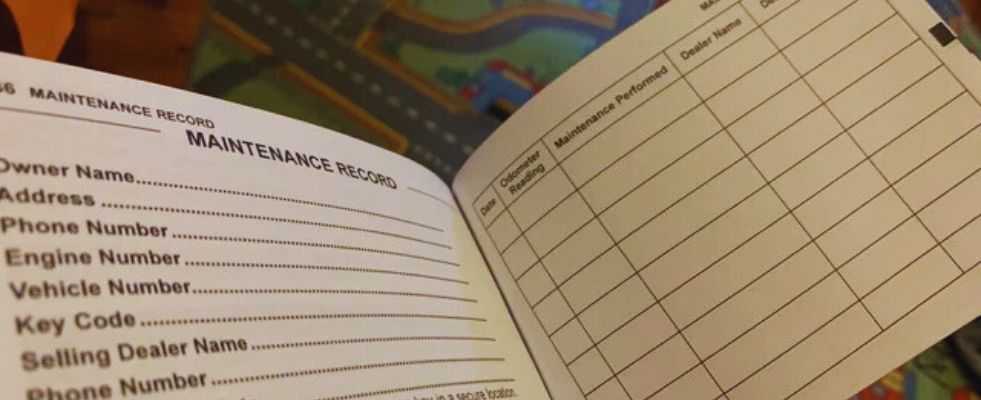
Storage Conditions
You wouldn’t believe how many “garage-kept” bikes I’ve seen that were actually stored outside under a thin cover. Here’s what proper storage looks like:
- Climate-controlled environment
- Away from direct sunlight
- On stands to keep tires off the ground
- Protected from moisture and elements
Riding Conditions
The type of miles matters more than the number of miles. Think about it:
- Highway miles are generally easier on bikes
- City stop-and-go traffic causes more wear
- Off-road riding can be brutal on components
- Coastal areas mean salt exposure
Previous Owner Habits
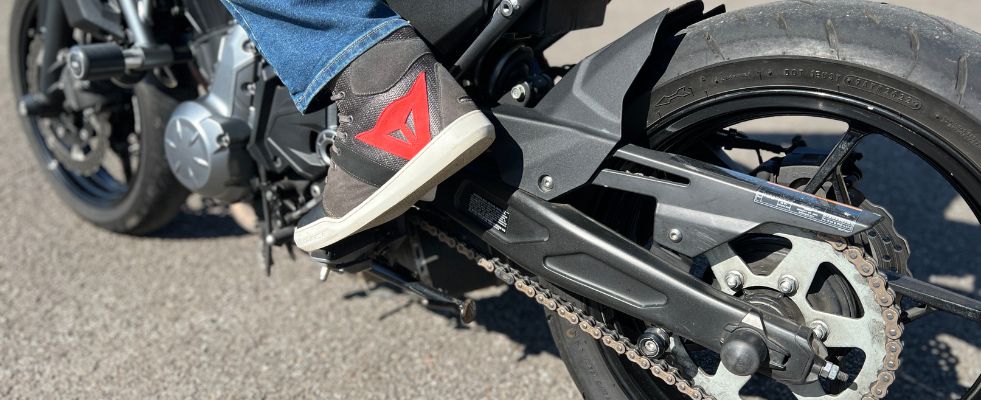
This is something most buyers overlook, but it’s crucial. You want to know:
- Was the bike warmed up properly?
- Did they ride aggressively?
- Were repairs done professionally?
- How many owners has it had?
The Truth About High Mileage
Here’s the real deal about high-mileage motorcycles – they’re often some of the best deals out there. Let me break it down for you.
Average Annual Mileage Expectations
Most motorcycles see about 3,000-5,000 miles per year. But here’s what those numbers really mean:
- Less than 2,000/year: Might indicate neglect from sitting
- 5,000-8,000/year: Sweet spot for regular use
- Over 8,000/year: Usually highway miles (which isn’t bad!)
Brand Reliability Differences
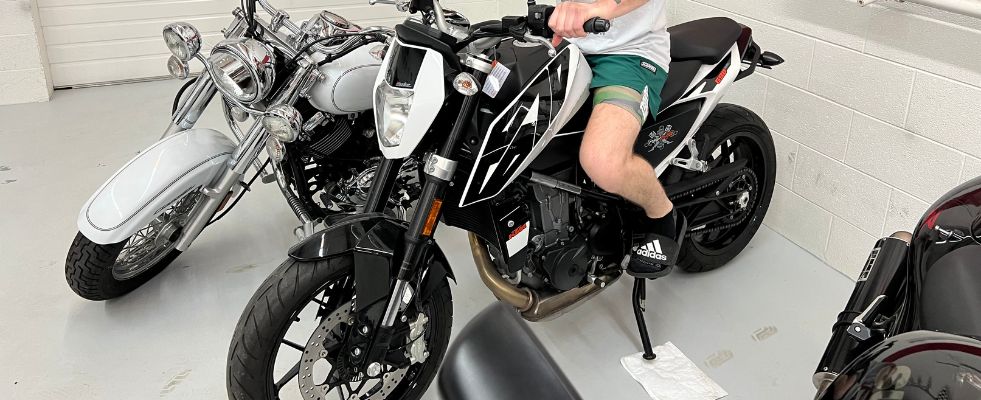
Not all motorcycles are created equal. Some brands are known for going the distance:
- Japanese bikes (Honda, Yamaha) often hit high miles reliably
- BMW touring bikes are legendary for longevity
- Harley-Davidson big twins can run forever with proper care
- Italian bikes might need more attention but can last just as long
Modern vs. Classic Motorcycles
This is where things get interesting:
- Modern bikes (2000+): Can easily hit 50,000+ miles with proper care
- Classic bikes (pre-2000): Might need more attention but are often simpler to maintain
- Fuel injection vs. carburetors make a big difference in longevity
- Electronic components can be the weak link in newer bikes
Red Flags Beyond Mileage
Let’s talk about what really matters when you’re looking at a used bike. Forget the odometer for a minute.
Visual Inspection Checklist
You can check out our full checklist in our article on How to Inspect a Used Motorcycle, but…
Here’s what to look for:
- Oil leaks around engine cases
- Rust in the tank or on chrome
- Fork seal condition
- Tire wear patterns
- Chain and sprocket condition
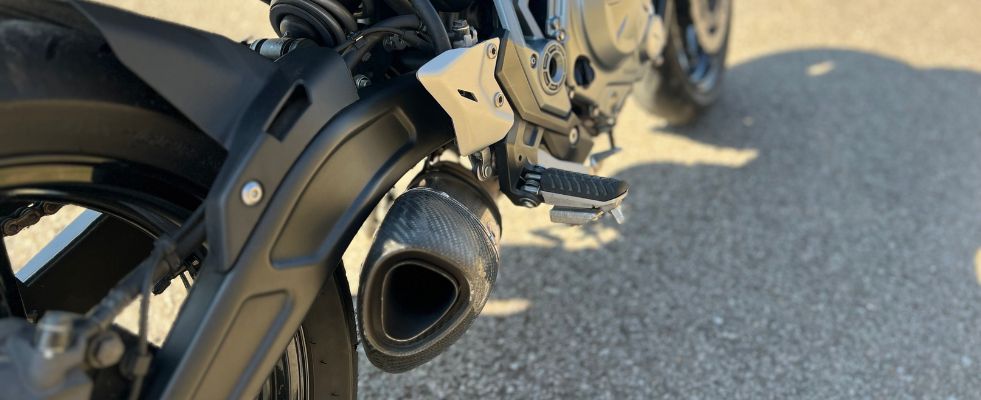
Common Wear Patterns
These tell the real story:
- Uneven tire wear (alignment issues)
- Rounded sprocket teeth (poor maintenance)
- Scored fork tubes (blown seals)
- Discolored exhaust pipes (running lean)
Documentation Requirements
Don’t just take their word for it. Look for:
- Service records
- Previous owner history
- Accident reports
- Modification
- Original manual and keys
How to Evaluate a High-Mileage Motorcycle
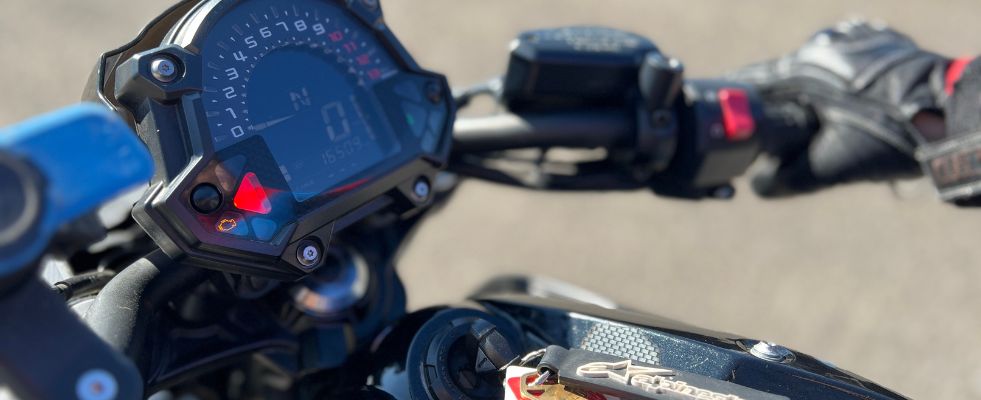
Luckily, there’s a method to checking out a high-mileage bike that goes way beyond kicking the tires.
Again, we cover this in our guide on How to Inspect a Used Motorcycle.
Pre-purchase Inspection Guide
Don’t skip this part – it could save you thousands:
- Cold start behavior (listen for unusual noises)
- Engine temperature stability
- Shifting through all gears
- Electrical system issues
- Brake feel
Test Ride Considerations
Here’s what to pay attention to during the ride:
- Smooth power delivery
- Clutch engagement
- Brake responsiveness
- Steering head bearings
- Suspension performance
Service Record Analysis
This is where you play detective:
- Match service dates with mileage
- Look for consistent intervals
- Check for major repairs
- Verify parts replacements
- Compare against manufacturer recommendations
Maintenance Considerations
This is where the rubber meets the road – literally.

Expected Repairs at Different Mileage Points
Here’s what you’re looking at:
15,000-20,000 miles:
- Valve adjustment
- Chain and sprockets
- Brake pads
- Tire replacement
30,000-40,000 miles:
- Fork seals
- Wheel bearings
- Clutch inspection
- Suspension rebuild
50,000+ miles:
- Engine gaskets
- Electrical components
- Major service items
- Chassis refreshing
Check out our Guide on Motorcycle Maintenance if you want to see what you’re in for.
Conclusion
Here’s what it all comes down to.
Ask yourself:
Is the maintenance history solid?
Does the price reflect the condition?
Are you ready for the maintenance?
Does it fit your riding plans?
My bottom line advice:
Prioritize maintenance over mileage
Get a professional inspection
Budget for immediate needs
Trust your gut feeling
Keep detailed records going forward
Remember, a high-mileage motorcycle isn’t just a used bike – it’s a story on two wheels.

